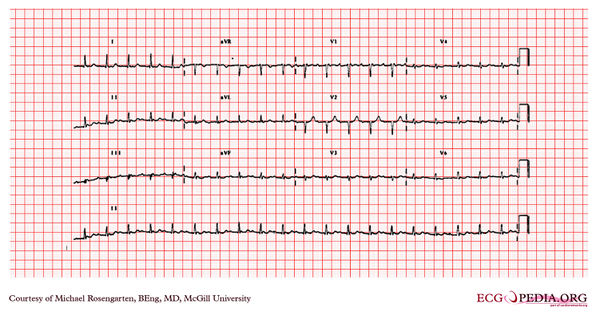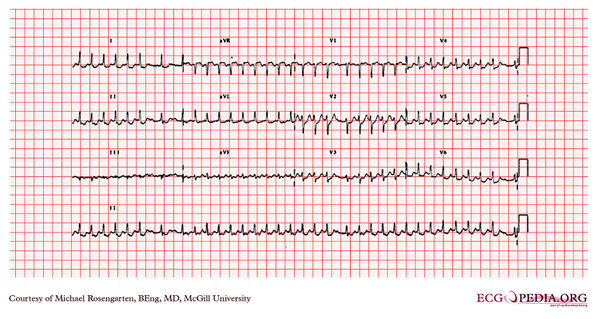McGill Case 272: Difference between revisions
Jump to navigation
Jump to search
Created page with "{{McGillcase| |previouspage= McGill Case 271 |previousname= McGill Case 271 |nextpage= McGill Case 273 |nextname= McGill Case 273 }} [[File:E2721.jpg|thumb|600px|left|These a..." |
No edit summary |
||
| Line 6: | Line 6: | ||
}} | }} | ||
[[File:E2721.jpg|thumb|600px|left| | [[File:E2721.jpg|thumb|600px|left|This second EKG is interesting as again it shows a supraventricular tachycardia with group ventricular beating with clusters of regular rhythm at about 215/min. The regularity and group beating suggest that this is an organized rhythm and not atrial fibrillation. Look carefully at the interval between the 6th and 7th beats in lead II. Clearly atrial activity is seen at about 215/min. | ||
This is an interesting case where the diltiazem has slowed down the SVT which has allowed faster conduction down the A/V node and hence an increase in the ventricular rate.]] | |||
[[File:E2722.jpg|thumb|600px|left|This is a recording was made at 14h59 (four minutes after the first) and after the patient was given intravenous diltiazem.]] | [[File:E2722.jpg|thumb|600px|left|This is a recording was made at 14h59 (four minutes after the first) and after the patient was given intravenous diltiazem.]] | ||
Latest revision as of 07:08, 21 February 2012

|

